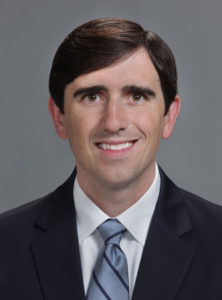Hip Impingement Surgeon

Are you an athlete who engages in sports or activities that involve the hip flexor muscles with repetitive motion? If so, you are at a greater risk of injuring the iliopsoas muscle/tendon. Hip surgeon, Dr. Robert Boykin provides diagnosis and both surgical and nonsurgical treatment options for patients in Asheville who need partial Psoas lengthening. Contact Dr. Boykin’s team today!
Psoas Impingement Overview
Individuals who engage in sports or activities that involve the hip flexor muscles are at a greater risk for injuring their iliopsoas muscle/tendon. Some examples include cyclists, sprinters, and other track and field athletes. The iliopsoas (psoas) is the primary hip flexor muscle, and its tendon passes just in front of the hip joint. Psoas impingement occurs when this tendon becomes tight and rubs against the front portion of the hip socket (acetabulum), causing pain and disability. Sometimes this psoas tendonitis (inflammation) can be associated with a snapping sound or sensation. This may be referred to as snapping hip syndrome or coxa saltans. This condition is commonly found in patients who are in sports requiring the use of repetitive hip flexion, as well as in young patients who are growing at a rapid rate which may cause the tendon to be tight.
Treatment for Psoas Impingement
Conservative treatment for pain associated with the iliopsoas muscle and tendon may start with physical therapy and/or an injection performed using an ultrasound machine. The injection will consists of a corticosteroid to help reduce the inflammation or a substance such as platelet rich plasma (PRP) to help enhance healing of the tendon. Physical therapy involves first stretching then strengthening of the psoas tendon through prescribed exercises and movements. If these measures do not work, surgery may be the next step. When conservative measures fail, Dr. Boykin specializes in partial psoas lengthening for patients in Asheville, Arden, Fletcher and surrounding communities.
Dr. Boykin treats patients with psoas impingement and snapping hip syndrome arthroscopically, which involves the use of a camera and small incisions that allow visibility from inside the hip joint. During this procedure, Dr. Boykin will surgically perform a partial lengthening of the tendon to release the tension but maintain the strength of the muscle. During this process the muscle and tendon complex elongate enough to decrease or eliminate the symptoms of the tendon rubbing over the front of the pelvis. This lengthening leaves the hip flexor attached to the femur and new research has shown this procedure to preserve the power of the hip flexor after surgery.
Am I a Candidate for Partial Psoas Lengthening?
Recent studies have indicated that some patients may be better candidates for this approach. Dr. Boykin will conduct a through examination and will use both clinical exam and imaging studies to determine if this particular procedure will provide an optimal outcome on a patient-by-patient basis.
Recovery Following Partial Psoas Lengthening
Following arthroscopic surgery, the patient will be given a strict protocol for rehabilitation and physical therapy as set forth by Dr. Boykin. Depending on the exact nature of the injury and surgery, most athletes are able to return to sports within 4 months following surgery after completing physical therapy. Dr. Boykin will provide each patient with a specific plan for rehab that will involve week-by-week rehabilitation exercises and a set of recommended protocols.
For additional information on the treatment for psoas impingement, or to learn more about hip arthroscopy and partial psoas lengthening, please contact the office of Dr. Robert Boykin, orthopedic hip specialist serving patients in Asheville, Arden, Fletcher and surrounding North Carolina communities.
